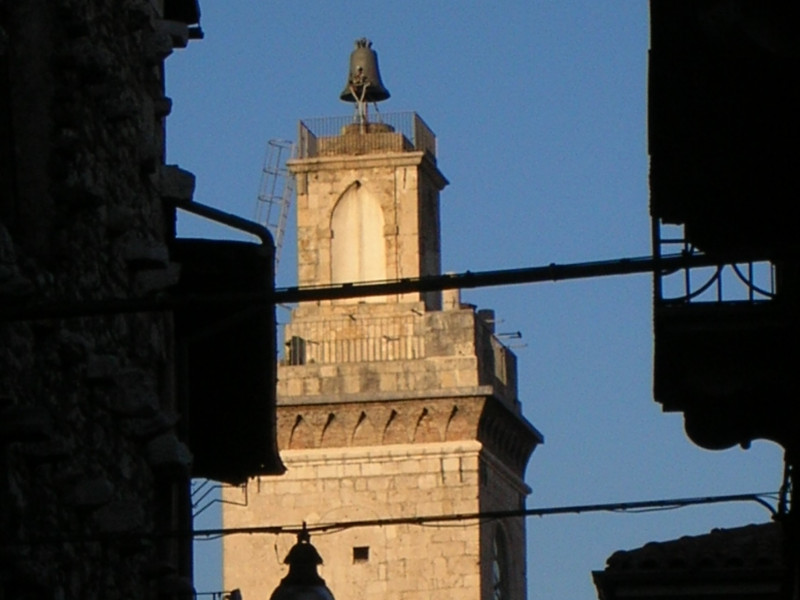Torre Civica (o Torre del Municipio)
Civic Tower is the only surviving element of the fourteenth-century Palazzo del Capitano, now part of Margherita Palce, the town hall of the city. Civic Tower, although altered and lower than original one, is one of the oldest architectural elements still present in the city: it was already present at the time of the foundation of L'Aquila, in 1254, and around it, at the end of the XIII century, ancient civic center was built. At the top of the tower were also placed the bells that marked the city life and warned of the need to close the doors of the city and the main events, such as meetings of City Council. One of them was stolen by the reins in 1313 and recovered in 1320, reason for which it is called "Reatinella"l. Civic Tower currently forms a single complex with adjacent Margherita Palace, from which however it is architecturally isolated. Originally it was about 52 meters high, able to control entire district for a radius of 18 miles, while today it has a height of about 26 meters. The tower now appears to be propped up following the damage caused by the earthquake of 2009. A quadrangular plant, it is structured on three shelves and a half, divided by a string course frame with stone slabs covering dating back to the second half of the 13th century. The upper part was cut off and presented a small terrace with an aedicule and a bell that replaced original ones, destroyed in the sixteenth century, which still today, at sunset, echoes 99 in memory of the 99 Castles that contributed to the foundation of the city. Inside, in the lower part, there is the chapel dedicated to Madonna degli Angeli, where, before the earthquake, famous Bubble of Forgiveness by Pope Celestino V was kept, which establishes the plenary indulgence in exchange for annual pilgrimage to Basilica of Santa Maria di Collemaggio.


